 W
WThe Thirtieth of September Movement was a self-proclaimed organization of Indonesian National Armed Forces members who, in the early hours of 1 October 1965, assassinated six Indonesian Army generals in an abortive coup d'état, resulting in the unofficial but more accurate name of Gestok, for Gerakan Satu Oktober, or First of October Movement. Later that morning, the organisation declared that it was in control of media and communication outlets and had taken President Sukarno under its protection. By the end of the day, the coup attempt had failed in Jakarta. Meanwhile, in central Java there was an attempt to take control over an army division and several cities. By the time this rebellion was put down, two more senior officers were dead.
 W
WThe 1964 Brazilian coup d'état, colloquially known in Brazil as the Coup of 64, was a series of events in Brazil from March 31 to April 1 that led to the overthrow of President João Goulart by members of the Brazilian Armed Forces, supported by the United States government. The following day, with the military already in control of the country, the speaker of the Brazilian Congress came out in support of the coup and endorsed it by declaring vacant the office of the presidency. The coup put an end to the government of Goulart, a member of the Brazilian Labour Party, who had been democratically elected vice president in the same election in which conservative Jânio Quadros, from the National Labour Party and backed by the National Democratic Union, won the presidency.
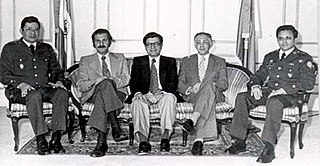 W
WThe 1979 Salvadoran coup d’état was a military coup d'état that occurred in El Salvador on 15 October 1979. The coup, led by young military officers, bloodlessly overthrew military President Carlos Humberto Romero and sent him into exile. The National Conciliation Party's firm grasp on power was cut, and in its place, the military established the Revolutionary Government Junta of El Salvador (JRG). The junta was composed of two military officers and three civilians.
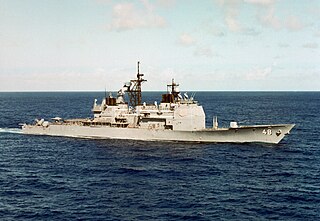 W
WOn March 13, 1986, the American cruiser USS Yorktown and the destroyer USS Caron, claiming the right of innocent passage, entered Soviet territorial waters in the Black Sea near the southern Crimean Peninsula. The warships passed within six miles of the Soviet coast, where they were soon confronted by the Soviet frigate Ladny. The commander of Ladny notified the U.S. warships that they had violated Soviet territorial waters and requested that they depart immediately. The U.S. warships confirmed receipt of the warning but did not change course. The Soviet command placed its Black Sea air and naval forces on combat readiness and dispatched border guard vessels and naval aircraft to intercept the U.S. warships.
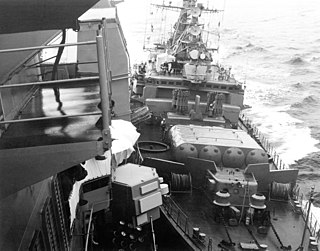 W
WThe Black Sea bumping incident of 12 February 1988 occurred when American cruiser USS Yorktown tried to exercise the right of innocent passage through Soviet territorial waters in the Black Sea during the Cold War. The cruiser was bumped by the Soviet frigate Bezzavetny with the intention of pushing Yorktown into international waters. This incident also involved the destroyer USS Caron, sailing in company with USS Yorktown and claiming the right of innocent passage, which was intentionally shouldered by a Soviet Mirka-class frigate SKR-6. Yorktown reported minor damage to its hull, with no holing or risk of flooding. Caron was undamaged.
 W
WThe Angolan Civil War was a civil war in Angola, beginning in 1975 and continuing, with interludes, until 2002. The war began immediately after Angola became independent from Portugal in November 1975. The war was a power struggle between two former anti-colonial guerrilla movements, the communist People's Movement for the Liberation of Angola (MPLA) and the anti-communist National Union for the Total Independence of Angola (UNITA). The war was used as a surrogate battleground for the Cold War by rival states such as the Soviet Union, Cuba, South Africa and the United States.
 W
WThe Berlin Blockade was one of the first major international crises of the Cold War. During the multinational occupation of post–World War II Germany, the Soviet Union blocked the Western Allies' railway, road, and canal access to the sectors of Berlin under Western control. The Soviets offered to drop the blockade if the Western Allies withdrew the newly introduced Deutsche Mark from West Berlin.
 W
WBlack September, also known as the Jordanian Civil War was a conflict fought in the Hashemite Kingdom of Jordan between the Jordanian Armed Forces (JAF), under the leadership of King Hussein, and the Palestine Liberation Organisation (PLO), under the leadership of Yasser Arafat, primarily between 16 and 27 September 1970, with certain aspects of the conflict continuing until 17 July 1971.
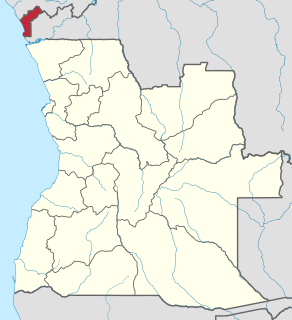 W
WThe Cabinda War is an ongoing separatist insurgency, waged by the Front for the Liberation of the Enclave of Cabinda (FLEC) against the government of Angola. FLEC aims at the restoration of the self-proclaimed Republic of Cabinda, located within the borders of the Cabinda province of Angola.
 W
WThe Cambodian–Vietnamese War, known in Vietnam as the Counter-offensive on the Southwestern border, and by Cambodian nationalists as the Vietnamese invasion of Cambodia, was an armed conflict between Democratic Kampuchea, controlled by the Khmer Rouge, and the Socialist Republic of Vietnam. The war began with repeated attacks by the Kampuchean Revolutionary Army on the southwestern border of Vietnam, particularly the Ba Chuc massacre which resulted in the deaths of over 3,000 Vietnamese civilians. On 25 December 1978, Vietnam launched a full-scale invasion of Kampuchea, and subsequently occupied the country and removed the government of the Communist Party of Kampuchea from power.
 W
WThe Central American crisis began in the late 1970s, when major civil wars and communist revolutions erupted in various countries in Central America, causing it to become the world's most volatile region in terms of socioeconomic change. In particular, the United States feared that victories by communist forces would cause South America to become isolated from the United States if the governments of the Central American countries were overthrown and pro-Soviet communist governments were installed in their place. Throughout the second half of the twentieth century, the United States often pursued its interests through puppet governments and the elite classes, whose members tended to ignore the demands of the peasant and working class.
 W
WThe 1973 Chilean coup d'état was a military coup in Chile that deposed the Popular Unity government of President Salvador Allende. On 11 September 1973, after an extended period of social unrest and political tension between the opposition-controlled Congress and the socialist President, as well as economic war ordered by U.S President Richard Nixon, a group of military officers led by General Augusto Pinochet seized power in a coup, ending civilian rule.
 W
WThis article covers the Afghan history from the Soviet withdrawal from Afghanistan on 15 February 1989 until 27 April 1992, the day after the proclamation of the Peshawar Accords proclaiming a new interim Afghan government which was supposed to start serving on 28 April 1992.
 W
WConflicts in the Horn of Africa have been occurring since the 17th century BCE. The Horn of Africa includes the nations of Djibouti, Eritrea, Ethiopia, Somalia, and Somaliland.
 W
WThe Congo Crisis was a period of political upheaval and conflict in the Republic of the Congo between 1960 and 1965. The crisis began almost immediately after the Congo became independent from Belgium and ended, unofficially, with the entire country under the rule of Joseph-Désiré Mobutu. Constituting a series of civil wars, the Congo Crisis was also a proxy conflict in the Cold War, in which the Soviet Union and the United States supported opposing factions. Around 100,000 people are believed to have been killed during the crisis.
 W
WThe Contras were the various U.S.-backed and funded right-wing rebel groups that were active from 1979 to the early 1990s in opposition to the Marxist Sandinista Junta of National Reconstruction Government in Nicaragua which came to power in 1979 following the Nicaraguan Revolution. Among the separate contra groups, the Nicaraguan Democratic Force (FDN) emerged as the largest by far. In 1987, virtually all contra organizations were united, at least nominally, into the Nicaraguan Resistance.
 W
WThe Cuban intervention in Angola began on 5 November 1975, when Cuba sent combat troops in support of the communist-aligned People's Movement for the Liberation of Angola (MPLA) against the pro-western National Union for the Total Independence of Angola (UNITA) and National Liberation Front of Angola (FNLA). The intervention came after the outbreak of the Angolan Civil War, which occurred after the former Portuguese colony was granted independence after the Angolan War of Independence. The civil war quickly became a proxy war between the Eastern Bloc led by the Soviet Union and the Western Bloc led by the United States. South Africa and the United States backed UNITA and the FNLA, while communist nations backed the MPLA.
 W
WThe Cuban Missile Crisis, also known as the October Crisis of 1962, the Caribbean Crisis, or the Missile Scare, was a 1 month, 4 day confrontation between the United States and the Soviet Union which escalated into an international crisis when American deployments of missiles in Italy and Turkey were matched by Soviet deployments of similar ballistic missiles in Cuba. Despite the short time frame, the Cuban Missile Crisis remains a defining moment in U.S. national security and nuclear war preparation. The confrontation is often considered the closest the Cold War came to escalating into a full-scale nuclear war.
 W
WIn late February 1948, the Communist Party of Czechoslovakia, with Soviet backing, assumed undisputed control over the government of Czechoslovakia, marking the onset of four decades of communist rule in the country.
 W
WThe Dhofar Rebellion, also known as the Dhofar War or the Omani Civil War, was waged from 1963 to 1976 in the province of Dhofar against the Sultanate of Muscat and Oman. The war began with the formation of the Dhofar Liberation Front, a group which aimed to create an independent state in Dhofar, free from the rule of the Omani Sultan Said bin Taimur. The rebels also held the broader goals of Arab nationalism which included ending British influence in the Persian Gulf region.
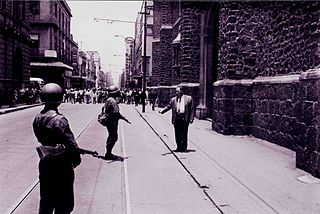 W
WThe Mexican Dirty War refers to the Mexican theater of the Cold War, an internal conflict in the 1960s and 1970s between the Mexican PRI-ruled government under the presidencies of Gustavo Díaz Ordaz, Luis Echeverría and José López Portillo, which were backed by the US government, and left-wing student and guerrilla groups. During the war, government forces carried out disappearances, estimated at 1,200, systematic torture, and "probable extrajudicial executions".
 W
WThe Dominican Civil War took place between April 24, 1965, and September 3, 1965, in Santo Domingo, Dominican Republic. It started when civilian and military supporters of the overthrown democratically-elected president Juan Bosch ousted the militarily-installed president Donald Reid Cabral from office. The coup prompted General Elías Wessin y Wessin to organize elements of the military loyal to President Reid ("loyalists"), initiating an armed campaign against the so-called "constitutionalist" rebels. In riposte, the dissidents passed out Cristóbal Carbines and machine-guns to several thousand civilian sympathizers and adherents.
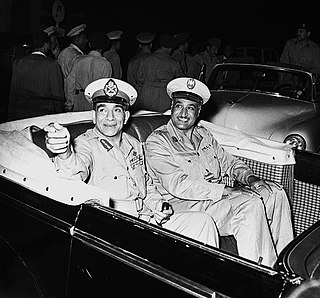 W
WThe Egyptian Revolution of 1952, also known as the 23 July Revolution, was a period of profound political, economic, and societal change in Egypt that began on 23 July 1952 with the toppling of King Farouk in a coup d'etat by the Free Officers Movement, a group of army officers led by Mohammed Naguib and Gamal Abdel Nasser. The Revolution ushered in a wave of revolutionary politics in the Arab World, and Africa, and contributed to the escalation of decolonisation, and the development of Third World solidarity during the Cold War.
 W
WThe Ethiopian Civil War was a civil war in Ethiopia and present-day Eritrea, fought between the Ethiopian military junta communist governments and Ethio-Eritrean anti-government rebels from September 1974 to June 1991.
 W
WThe Ezeiza massacre took place on June 20, 1973, at Puente 12(34.722438°S 58.513419°W), the intersection of General Ricchieri freeway and Camino de Cintura, some 10 km distant from Ezeiza International Airport in Buenos Aires, Argentina.
 W
WThe 1954 Guatemalan coup d'état, code-named Operation PBSuccess, was a covert operation carried out by the U.S. Central Intelligence Agency (CIA) that deposed the democratically elected Guatemalan President Jacobo Árbenz and ended the Guatemalan Revolution of 1944–1954. It installed the military dictatorship of Carlos Castillo Armas, the first in a series of U.S.-backed authoritarian rulers in Guatemala.
 W
WThe Guatemalan Revolution was the period in Guatemalan history between the popular uprising that overthrew dictator Jorge Ubico in 1944 and the United States-orchestrated coup d'état in 1954 that overthrew the democratically elected President Jacobo Árbenz. This period has also been called the Ten Years of Spring, highlighting the only years of representative democracy in Guatemala from 1930 until the end of the civil war in 1996, which saw the implementation of a program of social, political, and especially agrarian reform that was enormously influential across Latin America.
 W
WThe history of Egypt under Gamal Abdel Nasser covers the period of Egyptian history from the Egyptian revolution of 1952, of which Gamal Abdel Nasser was one of the two principal leaders, spanning Nasser's presidency of Egypt from 1956, to his death in 1970. Nasser's tenure as Egypt's leader heralded a new period of modernisation and socialist reform in Egypt and a staunch advocacy of pan-Arab nationalism and developing world solidarity. His prestige in Egypt and throughout the Arab world soared in the wake of his nationalisation of the Suez Canal in 1956, and Egypt's political victory in the subsequent Tripartite Aggression, but was damaged badly by Israel's successful invasion and occupation of Egyptian and Palestinian territory in the Six-Day War of 1967.
 W
WThe Indonesian mass killings of 1965–66, also known as the Indonesian genocide, Indonesian Communist Purge, or Indonesian politicide, were large-scale killings and civil unrest that occurred in Indonesia over several months, targeting Communist Party of Indonesia (PKI) party members, Communist sympathisers, Gerwani women, ethnic Javanese Abangan, ethnic Chinese, and alleged leftists, often at the instigation of the armed forces and government, which were supported by the United States and other Western countries. It began as an anti-communist purge following a controversial attempted coup d'état by the 30 September Movement. The most widely published estimates were that 500,000 to more than one million people were killed, with some more recent estimates going as high as two to three million. The purge was a pivotal event in the transition to the "New Order" and the elimination of PKI as a political force, with impacts on the global Cold War. The upheavals led to the fall of President Sukarno and the commencement of Suharto's three-decade authoritarian presidency.
 W
WThe Iran crisis of 1946, also known as the Azerbaijan Crisis in the Iranian sources, was one of the first crises of the Cold War, sparked by the refusal of Joseph Stalin's Soviet Union to relinquish occupied Iranian territory, despite repeated assurances. The end of World War II should have resulted in the end of the Allied joint occupation of Iran. Instead, Pro-Soviet Iranians proclaimed the separatist Azerbaijan People's Government and the Kurdish separatist Republic of Mahabad. The United States pressure on the Soviet Union to withdraw is the earliest evidence of success with the new strategy of Truman Doctrine and containment.
 W
WThe 1953 Iranian coup d'état, known in Iran as the 28 Mordad coup d'état, was the overthrow of the democratically elected Prime Minister Mohammad Mosaddegh in favour of strengthening the monarchical rule of the Shah, Mohammad Reza Pahlavi on 19 August 1953. It was orchestrated by the United States and the United Kingdom. The clergy also played a considerable role.
 W
WThe Laotian Civil War (1959–1975) was a civil war in Laos which was waged between the Communist Pathet Lao and the Royal Lao Government from 23 May 1959 to 2 December 1975. It is associated with the Cambodian Civil War and the Vietnam War, with both sides receiving heavy external support in a proxy war between the global Cold War superpowers. It is called the Secret War among the CIA Special Activities Center and Hmong and Mien veterans of the conflict.
 W
WThe Malayan Emergency (1948–1960) was a guerrilla war fought in the Federation of Malaya between Communist pro-independence fighters of the Malayan National Liberation Army (MNLA), the Malayan Communist Party's (MCP) armed wing, against the armed forces of the British Empire and Commonwealth. The communist forces fought to gain independence for Malaya from the British Empire and to establish a socialist economy, while the Commonwealth forces fought to combat communism and protect British economic and geopolitical interests. The fighting spanned both the colonial period and the creation of an independent Malaya in 1957. The conflict was called the "Anti-British National Liberation War" by the MNLA, but an "Emergency" by the British for insurance purposes, as London-based insurers would not have paid out in instances of civil wars.
 W
WThe Nicaraguan Revolution encompassed the rising opposition to the Somoza dictatorship in the 1960s and 1970s, the campaign led by the Sandinista National Liberation Front (FSLN) to oust the dictatorship in 1978–79, the subsequent efforts of the FSLN to govern Nicaragua from 1979 to 1990, and the Contra War, which was waged between the FSLN-led government of Nicaragua and the United States-backed Contras from 1981–1990. The revolution marked a significant period in the history of Nicaragua and revealed the country as one of the major proxy war battlegrounds of the Cold War, attracting much international attention.
 W
WThe Ogaden War, or the Ethio-Somali War, was a military conflict fought between Somalia and Ethiopia from July 1977 to March 1978 over the Ethiopian region of Ogaden. The conflict began with the Somali invasion of Ethiopia. The Soviet Union disapproved of the invasion and ceased its support of Somalia, instead starting to support Ethiopia. Ethiopia was saved from defeat and permanent loss of territory through a massive airlift of military supplies worth $1 billion, the arrival of more than 12,000 Cuban soldiers and airmen sent by Fidel Castro to win a second African victory, and 1,500 Soviet advisors, led by General Vasily Petrov. On 23 January 1978, Cuban armored brigades inflicted the worst losses the Somali forces had ever taken in a single action since the start of the war. The Ethiopians and Cubans prevailed at Harar, Dire Dawa and Jijiga, and began to push the Somalis systematically out of the Ogaden. By 23 March 1978, the Ethiopians and Cubans had recaptured more than two-thirds of the Ogaden, marking the official end of the war. A third of the Somali National Army was killed, and half of the Somali Airforce destroyed; the war left Somalia with a disorganized and demoralized army and an angry population. All of these conditions led to a revolt in the army which eventually spiraled into a civil war.
 W
WOperation Abirey-Halev or Operation Abirey-lev, also known as Operation Stouthearted Men, code-named Operation Gazelle, is an Israeli operation that took place in the center of Suez Canal on 15–23 October 1973 during the Yom Kippur War.
 W
WOperation Condor was a United States-backed campaign of political repression and state terror involving intelligence operations and assassination of opponents. It was officially and formally implemented in November 1975 by the right-wing dictatorships of the Southern Cone of South America.
 W
WOperation Cyclone was the code name for the United States Central Intelligence Agency (CIA) program to arm and finance the Afghan mujahideen in Afghanistan from 1979 to 1989, prior to and during the military intervention by the USSR in support of the Democratic Republic of Afghanistan. The mujahideen were also supported by Britain's MI6, who conducted separate covert actions. The program leaned heavily towards supporting militant Islamic groups, including groups with jihadist ties, that were favored by the regime of Muhammad Zia-ul-Haq in neighboring Pakistan, rather than other, less ideological Afghan resistance groups that had also been fighting the Soviet-oriented Democratic Republic of Afghanistan regime since before the Soviet intervention.
 W
WOperation Savannah was the South African code name for their military incursion into Angola in 1975–1976. It was part of the South African Border War and arose due to the Angolan War of Independence. The operation also materially influenced the subsequent Angolan Civil War. South African forces invaded deep into Angola with the objective of driving the MPLA, Soviet and Cuban forces out of southern Angola so as to strengthen the position of UNITA, the main opponent of the MPLA and an ally of South Africa.
 W
WThe Portuguese Colonial War, also known in Portugal as the Overseas War or in the former colonies as the War of Liberation, and also known as the Angolan, Guinea-Bissau and Mozambican War of Independence, was a thirteen year long conflict fought between Portugal's military and the emerging nationalist movements in Portugal's African colonies between 1961 and 1974. The Portuguese ultra-conservative regime at the time, the Estado Novo, was overthrown by a military coup in 1974, and the change in government brought the conflict to an end. The war was a decisive ideological struggle in Lusophone Africa, surrounding nations, and mainland Portugal.
 W
WThe Rhodesian Bush War—also called the Second Chimurenga as well as the Zimbabwe War of Liberation—was a civil conflict from July 1964 to December 1979 in the unrecognised country of Rhodesia . The conflict pitted three forces against one another: the Rhodesian white minority-led government of Ian Smith ; the Zimbabwe African National Liberation Army, the military wing of Robert Mugabe's Zimbabwe African National Union; and the Zimbabwe People's Revolutionary Army of Joshua Nkomo's Zimbabwe African People's Union.
 W
WShaba I was a conflict in Zaire's Shaba (Katanga) Province lasting from March 8 to May 26, 1977. The conflict began when the Front for the National Liberation of the Congo (FNLC), a group of about 2,000 Katangan Congolese soldiers who were veterans of the Congo Crisis, the Angolan War of Independence, and the Angolan Civil War, crossed the border into Shaba from Angola. The FNLC made quick progress through the region because of the sympathizing locals and the disorganization of the Zairian military. Travelling east from Zaire's border with Angola, the rebels reached Mutshatsha, a small town near the key mining town of Kolwezi.
 W
WThe Simba rebellion of 1963–65, also known as the Orientale Revolt, was a rebellion in the Democratic Republic of the Congo which took place within the wider context of the Congo Crisis and the Cold War. The rebellion, located in the east of the country, was led by the followers of Patrice Lumumba, who had been ousted from power in 1960 by Joseph Kasa-Vubu and Joseph-Désiré Mobutu and subsequently killed in January 1961 in Katanga. The rebellion was contemporaneous with the Kwilu Rebellion led by fellow Lumumbist Pierre Mulele in central Congo.
 W
WThe Sino-Vietnamese War was a border war fought between China and Vietnam in early 1979. China launched an offensive in response to Vietnam's actions against the Khmer Rouge in 1978, which ended the rule of the Chinese-backed Khmer Rouge. Both China and Vietnam claimed victory in the last of the Indochina Wars.
 W
WThe Six-Day War, also known as the June War, the 1967 Arab–Israeli War or the Third Arab–Israeli War, was an armed conflict fought from 5 to 10 June 1967 between Israel and an Arab coalition primarily comprising Jordan, Syria and UAR Egypt.
 W
WThe South African Border War, also known as the Namibian War of Independence, and sometimes denoted in South Africa as the Angolan Bush War, was a largely asymmetric conflict that occurred in Namibia, Zambia, and Angola from 26 August 1966 to 21 March 1990. It was fought between the South African Defence Force (SADF) and the People's Liberation Army of Namibia (PLAN), an armed wing of the South West African People's Organisation (SWAPO). The South African Border War resulted in some of the largest battles on the African continent since World War II and was closely intertwined with the Angolan Civil War.
 W
WThe Soviet–Afghan War was a conflict wherein insurgent groups, as well as smaller Shi'ite and Maoist groups, fought a nine-year guerrilla war against the Democratic Republic of Afghanistan and the Soviet Army throughout the 1980s, mostly in the Afghan countryside. The Mujahideen were variously backed primarily by the United States, Pakistan, Iran, Saudi Arabia, China, and the United Kingdom; the conflict was a Cold War-era proxy war. Between 562,000 and 2,000,000 Afghans were killed and millions more fled the country as refugees, mostly to Pakistan and Iran. Between 6.5%–11.5% of Afghanistan's population is estimated to have perished in the conflict. The war caused grave destruction in Afghanistan and is believed to have contributed to the Soviet collapse and the end of the Cold War, in hindsight leaving a mixed legacy to people in both territories.
 W
WOn 1 May 1960, a United States U-2 spy plane was shot down by the Soviet Air Defence Forces while performing photographic aerial reconnaissance deep inside Soviet territory. The single-seat aircraft, flown by pilot Francis Gary Powers, was hit by an S-75 Dvina surface-to-air missile and crashed near Sverdlovsk. Powers parachuted safely and was captured.
 W
WThe United States invasion of Grenada began at dawn on 25 October 1983. The U.S. and a coalition of six Caribbean nations invaded the island nation of Grenada, 100 miles (160 km) north of Venezuela. Codenamed Operation Urgent Fury by the U.S. military, it resulted in military occupation within a few days. It was triggered by the strife within the People's Revolutionary Government which resulted in the house arrest and execution of the previous leader and second Prime Minister of Grenada Maurice Bishop, and the establishment of the Revolutionary Military Council with Hudson Austin as Chairman. The invasion resulted in the appointment of an interim government, followed by elections in 1984.
 W
WThe 1954 to 1959 phase of the Vietnam War was the era of the two nations. Coming after the First Indochina War, this period resulted in the military defeat of the French, a 1954 Geneva meeting that partitioned Vietnam into North and South, and the French withdrawal from Vietnam, leaving the Republic of Vietnam regime fighting a communist insurgency with USA aid. During this period, North Vietnam recovered from the wounds of war, rebuilt nationally, and accrued to prepare for the anticipated war. In South Vietnam, Ngô Đình Diệm consolidated power and encouraged anti-communism. This period was marked by U.S. support to South Vietnam before Gulf of Tonkin, as well as communist infrastructure-building.
 W
WThe Vietnam War, also known as the Second Indochina War, was a conflict in Vietnam, Laos, and Cambodia from 1 November 1955 to the fall of Saigon on 30 April 1975. It was the second of the Indochina Wars and was officially fought between North Vietnam and South Vietnam. North Vietnam was supported by the Soviet Union, China, and other communist allies; South Vietnam was supported by the United States, South Korea, the Philippines, Australia, Thailand, and other anti-communist allies. The war, considered a Cold War-era proxy war by some, lasted almost 20 years, with direct U.S. involvement ending in 1973, and included the Laotian Civil War and the Cambodian Civil War, which ended with all three countries becoming communist in 1975.
 W
WThe War in Vietnam, codenamed Operation Masterdom by the British, and also known as the Southern Resistance War by the Vietnamese, was a post–World War II armed conflict involving a largely British-Indian and French task force and Japanese troops from the Southern Expeditionary Army Group, versus the Vietnamese communist movement, the Viet Minh, for control of the southern half of the country, after the unconditional Japanese surrender.
 W
WThe Yom Kippur War, also known as the Ramadan War, the October War, the 1973 Arab–Israeli War or the Fourth Arab–Israeli War, was an armed conflict fought from 6 to 25 October 1973 between Israel and a coalition of Arab states led by Egypt and Syria. The majority of combat between the two sides took place in the Sinai Peninsula and the Golan Heights—both of which were occupied by Israel in 1967—with some fighting in African Egypt and northern Israel. Egypt's initial objective in the war was to seize a foothold on the eastern bank of the Suez Canal and subsequently leverage these gains to negotiate the return of the rest of the Israeli-occupied Sinai Peninsula.